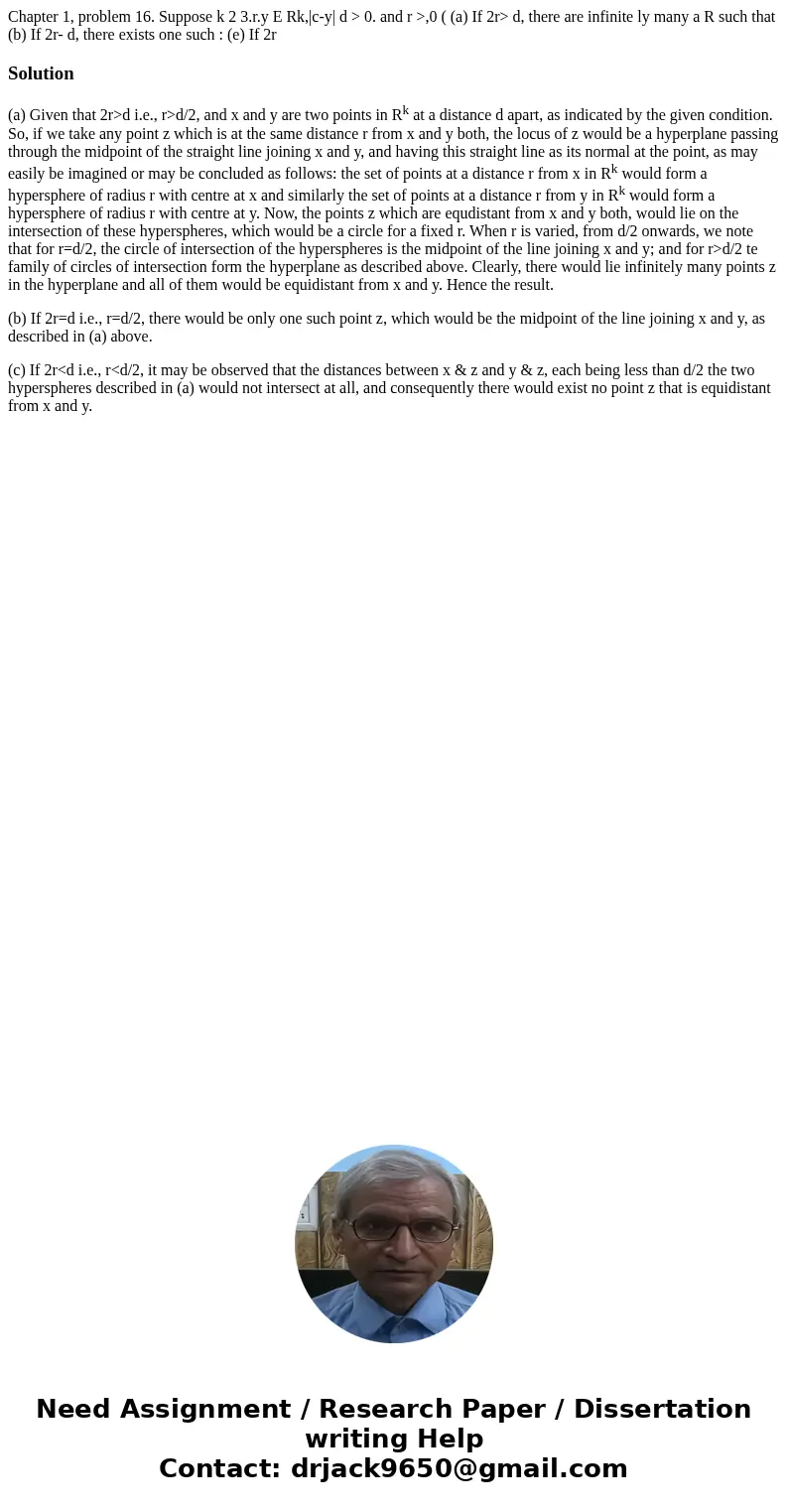Chapter 1 problem 16 Suppose k 2 3ry E Rkcy d 0 and r 0 a
Solution
(a) Given that 2r>d i.e., r>d/2, and x and y are two points in Rk at a distance d apart, as indicated by the given condition. So, if we take any point z which is at the same distance r from x and y both, the locus of z would be a hyperplane passing through the midpoint of the straight line joining x and y, and having this straight line as its normal at the point, as may easily be imagined or may be concluded as follows: the set of points at a distance r from x in Rk would form a hypersphere of radius r with centre at x and similarly the set of points at a distance r from y in Rk would form a hypersphere of radius r with centre at y. Now, the points z which are equdistant from x and y both, would lie on the intersection of these hyperspheres, which would be a circle for a fixed r. When r is varied, from d/2 onwards, we note that for r=d/2, the circle of intersection of the hyperspheres is the midpoint of the line joining x and y; and for r>d/2 te family of circles of intersection form the hyperplane as described above. Clearly, there would lie infinitely many points z in the hyperplane and all of them would be equidistant from x and y. Hence the result.
(b) If 2r=d i.e., r=d/2, there would be only one such point z, which would be the midpoint of the line joining x and y, as described in (a) above.
(c) If 2r<d i.e., r<d/2, it may be observed that the distances between x & z and y & z, each being less than d/2 the two hyperspheres described in (a) would not intersect at all, and consequently there would exist no point z that is equidistant from x and y.

 Homework Sourse
Homework Sourse